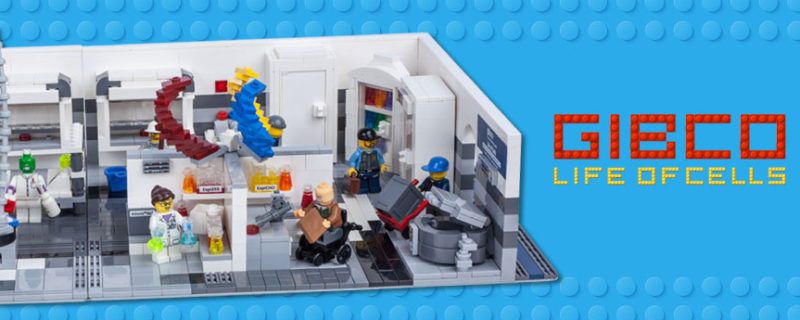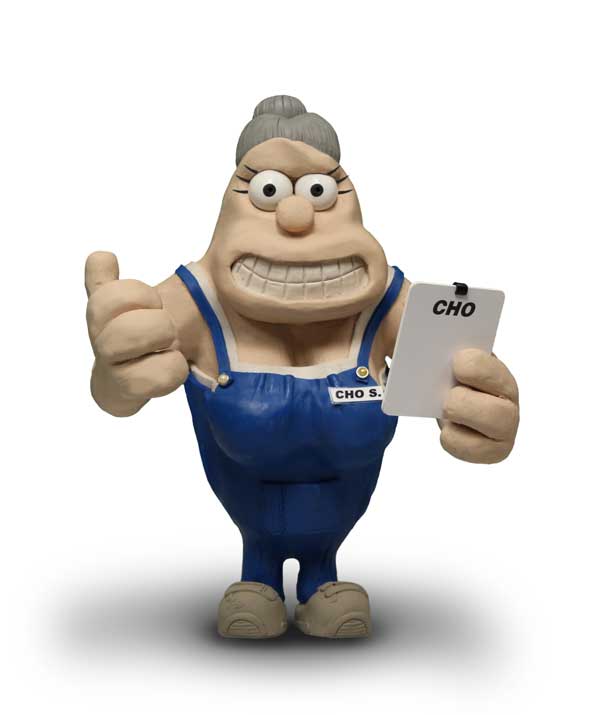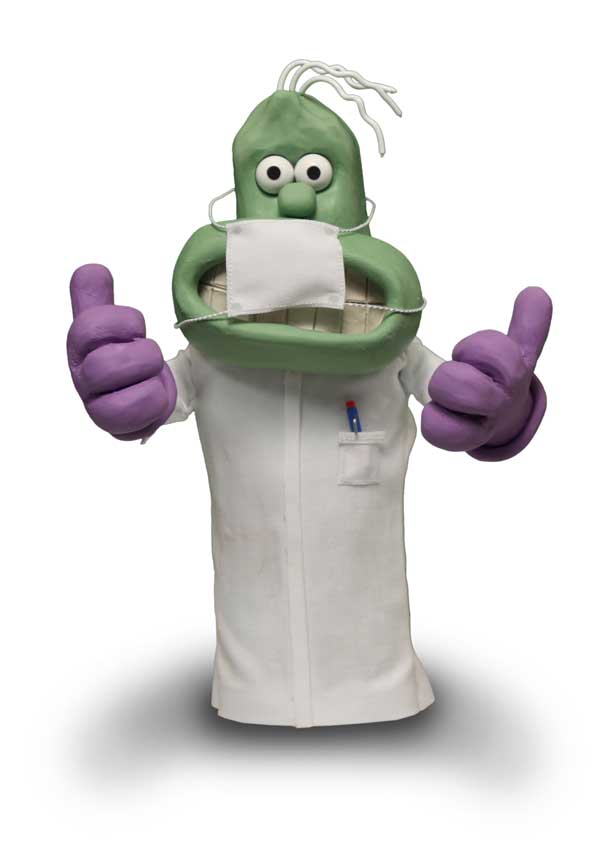
Meet the Cells – Get your questions answered about some popular cell lines.
Introduction
Do you have questions about stem cells, CHO cells, vero cells, Jurkat cells or HUVEC cells? If so, now is the time to get some answers. Whether its troubleshooting problems in your culture, understanding nutritional needs, cell vulnerabilities, or other issues, then visit this week’s Ask the Expert session and submit your questions.
This Ask the Expert Session is Sponsored by Life Technologies and features “interviews” with popular cell lines. Life Technologies has a fun interactive way to learn more about cell lines in their “Life of Cells” series, which features the cells as characters with important information, fun interactive contests, and clever videos. This week we will feature a different interview each day and readers will have the opportunity to ask questions about some of the most popular cells used in research and manufacturing.
Meet Stem Cell
 Q. When were you established?
Q. When were you established?
A. 1978
Q. What is your biggest asset?
A. With the proper programming, I can become anything I want to be.
Q. What is your biggest weakness?
A. I can be sensitive, a bit difficult to culture and I am pretty specific about my needs.
Q. What is your main job?
A. I have many. In research, I can be used to model different disease states and test the effects of drugs for toxicity and efficacy. I can also be used for Cell Therapy by being transplanted into patients.
Q. What are some of your goals?
A. To help people who are ill through Cell Therapy and eventually maybe I’ll be used to grow organs for transplantation.
Meet CHO S
 Q. When were you established?
Q. When were you established?
A. 1960’s
Q. What is your lineage?
A. Chinese Hamster Ovary
Q. What are your best attributes?
A. I love expressing and I’m a pretty easy going, robust cell.
Q. What is one of your biggest accomplishments?
A. They call us the “workhorse” of biomanufacturing and we are the most commonly used cell line in the manufacture of biopharmaceuticals.
Q. What is your main job?
A. Expressing recombinant proteins in large amounts.
Meet Vero
 Q. When were you established?
Q. When were you established?
A. 1962
Q. What is your lineage?
A. African Green Monkey Kidney
Q. What is your biggest asset?
A. My ability to grow viruses.
Q. What is one of your biggest accomplishments?
A. Recently I have been used in the commercial manufacture of the seasonal flu vaccine.
Q. If you could have anything, what would it be?
A. To help create vaccines for all the world’s most dangerous viruses.
Meet HUVEC
 Q. What is your full name?
Q. What is your full name?
A. Human Umbilical Vein Endothelial Cells
Q. What is your lineage?
A. Endothelial Cells
Q. What is your biggest asset?
A. I am a model system
Q. What is your main job as a research tool?
A. To study endothelial function and aid in the study of endothelial related diseases
Q. What are your weaknesses?
A. I can be a bit sensitive and I don’t like strong light
Meet Jurkat
 Q. When were you established?
Q. When were you established?
A. 1978
Q. What is your lineage?
A. T- lymphocyte cells
Q. What is your biggest asset?
A. My ability to produce interleukin 2
Q. What is your main job as a research tool?
A. To determine the mechanism of action of various drugs and radiation against cancer
Q. If you could have anything you want, what would it be?
A. To wipe out cancer
Question 1
I am using chemically defined media for our CHO-S pilot scale manufacturing. I am not happy with the titers, but don’t have the time to do more process development. Do you have any recommendations for quick things to try to raise productivity? Ideally it would be something I could just add to the media or feed.
There are a number of feeds on the market. Most major suppliers of cell culture media will have some type of feed to go with their protein expression media intended for scale productions.
Question 2
We are working on the adaptation of adherent Vero cells to suspension culture under serum-free conditions. Especially the step towards stirred systems showed increased formation of cell clumps, decreased cell growth and, thus, cell stagnation or cell death. Do you believe that an adaptation of Vero cells into suspension is feasible? Which strategy would you target: media design/ optimization or cell adaptation/ luck of getting a clone which finally prevails?
Generating Vero suspension cells, will be a challenge and there are several aspects which will be very important to consider:
· Media should include fluids which reduce shear forces, if the cells are being grown in a shaking format
· It may be necessary to screen many cells, to find a clone which might have the ability to grow in a suspension format
· It may be necessary to continually passage cells, until the suspension adapated cells finally prevail
· May want to try formulations of media designed for suspension cells
Here is a link with some additional information that may be helpful - http://www.lifetechnologies.com/us/en/home/references/protocols/cell-culture/serum-protocol/adaptation-of-cell-cultures-to-a-serum-free-medium.html
Question 3
I am looking for a good resource for using CRISPR in CHO genome editing. We are just beginning to look at this technology for improving cell characteristics. Any advice?
Here is a website with background information on using CRISPR for genome editing.
http://www.lifetechnologies.com/us/en/home/life-science/genome-editing/geneart-crispr/crispr-cas9-based-genome-editing.html .
CRISPR-Cas systems have become powerful tools for genome editing and the system as a good choice for your needs. This website also has a short video that will probably be helpful. The CRISPR Nuclease vector is the system for mammalian cells if you don’t have any promoter constraints.
Question 4
I am having difficulties with build up of lactic acid. In both of our fed batch cultures we are seeing a problem despite trying different feeding strategies. We are getting varying levels of lactate during the stationary phase. Do you know why this could be happening?
Your question is a good one and difficult to answer without knowing more about your specific culture conditions. The buildup of lactic acid during fed batch culture could come from several reasons. There is a correlation between lactate amounts and the reduction of culture productivity, so this is a big problem without an easy solution. Some cells are more sensitive than others. Hybridoma culture can be a particular problem since they stop producing antibodies once the lactic acid cut off point is reached. Lactic acid accumulation in media occurs because at low oxygen concentrations glucose is metabolized to pyruvate via glycolysis. If oxygen is available then pyruvate is decarboxylated to form Acetyl CoA in the mitochondria. During anaerobic conditions and especially in the stationary phase when the cell density is high and oxygen low Lactic acid is formed. If you measure the oxygen concentration this may be evident. You might add galactose or another more difficult to metabolize carbon source to reduce lactate or you could limit glucose.
Question 5
When we are transitioning our adherent CHO cells to suspension we are experiencing our VCC dropping by about 40%. Do you have any suggestions on how we could reduce this drop?
Transitioning your cells from one media to another or from adherent to suspension growth things can get tricky. I assume you are transitioning in a serum containing media like Ham’s F12 for your CHO cells, since serum-free media is generally made for suspension culture. You want to use early passage cells if possible. Seed your cells at a higher density than normal. My suggestion is to use Ham’s F12 without calcium or magnesium and some people reduce the serum from 10% to 5%. Also you might want to add a low concentration of the detergent Pluronic F-68 to reduce shear forces. Use a sterile shaking flask without baffles and shake at about 125 rpm. Good luck. Keep culturing your cells and the viability should increase as selection occurs.
Question 6
We are trying to transition our iPSCs to a serum free media, how do you recommend weaning and transitioning?
I am assuming you are starting with some fibroblast growth medium like DMEM supplemented with ESC-qualified FBS. If you are using GIBCO Essential 8 medium as your SFM you can transition directly. Essential 8 is designed for feeder free growth. Here is a reference https://www.lifetechnologies.com/us/en/home/references/protocols/cell-culture/stem-cell-protocols/ipsc-protocols/generation-human-induced-pluripotent-stem-cells-fibroblasts.html
If not, There are two ways to do this. Try a sequential adaptation. Assume you are using old media A and want to transition to new media B. Start in media A and know something about the kinetics of growth. Transition to 80%A:20%B grow several passages then move to 60%A:40%B then 40%A:60%B and so on until your cells are in 100new medium B. The other method involves removing 50% of the old media and supplementing with 50% the new media. If you are removing serum you will need to coat the dishes with some attachment matrix like geltrex or vitronectin if you want attachment.